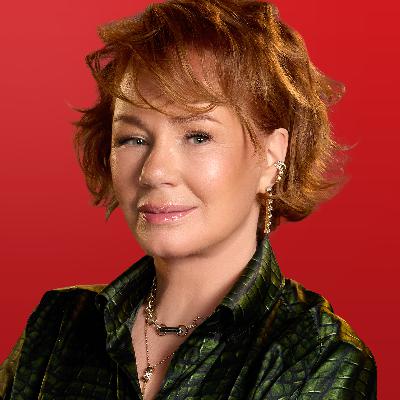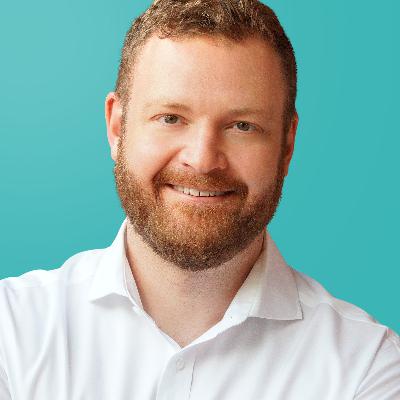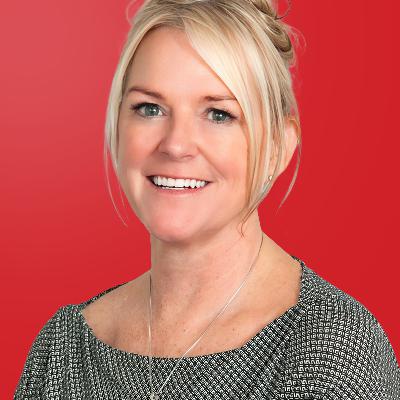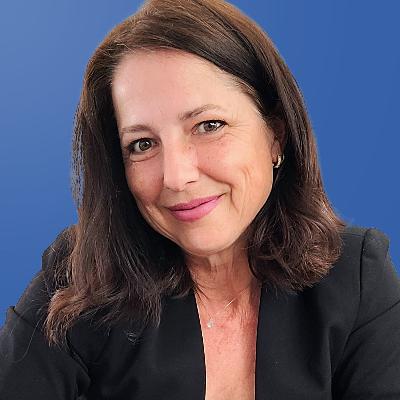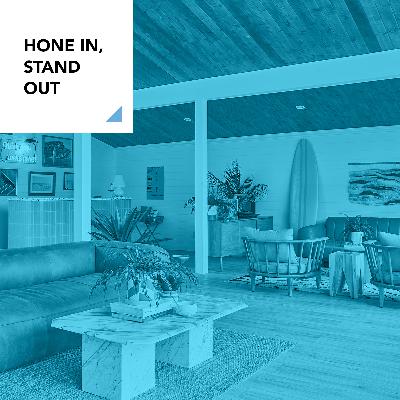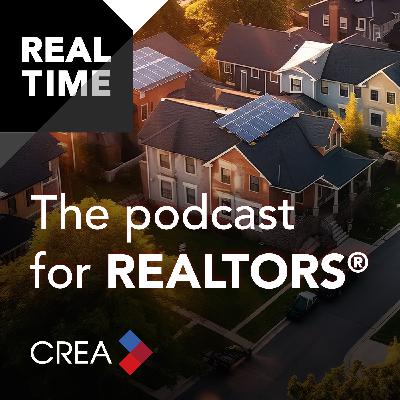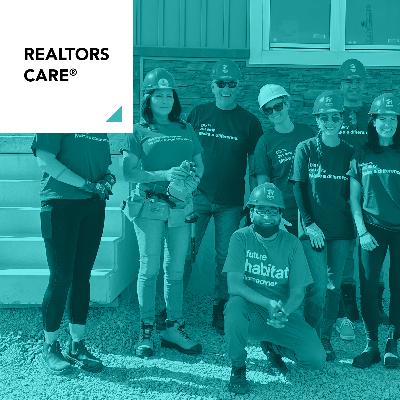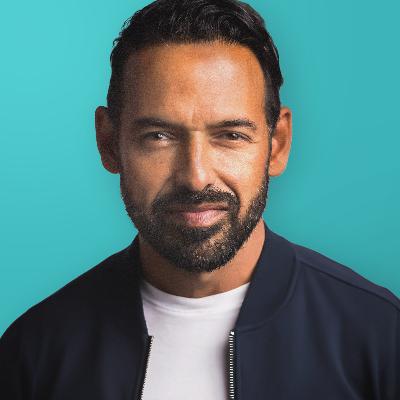Episode 61: Exploring Sustainable Building and a Greener Real Estate Industry – Mark Holland
Description
The demand for greener homes and communities is growing in Canada, but there are still a lot of questions about how we can embrace sustainability in real estate at the personal, professional, and industrial levels.
Mark Holland, principal at Westplan Consulting Group and a professor at Vancouver Island University, shares insights on how REALTORS® can become leaders in real estate’s green future, the impacts of climate change within our communities, sustainable home building practices, and sustainable innovations on the horizon.
Want to learn more? CREA’S Canadian Certified Green Representative (CCGR) certification is now available for REALTORS®.
Transcript
Mark Holland: This is a good program. This will withstand the common-sense test.
Shaun Majumder: Hey, Mark, do you want to buy a tube TV?
Shaun: At this point, it's nearly impossible to ignore climate change and its effects on our lives. We all have a responsibility to minimize our footprint where we can, but it's increasingly important to protect your home for safety, for comfort, and your wallet. For REALTORS®, a big part of that is really and truly understanding sustainable housing and environmentally conscious building practices, and then being able to explain the importance of these things to your client. On today's show, we're being joined by Mark Holland, principal at Westplan Consulting Group. He's a professor at Vancouver Island University and a LEED-accredited professional.
Today, I'm going to be asking him a ton of questions about green building and sustainability, and how it affects all of our communities. As a bonus, we're going to be throwing in a couple of extra questions from REALTORS® just like you. It's a great episode. I can't wait to get started. Why wait? Mark, wow. Mark, it's a real pleasure to meet you. I'm really excited to talk to you today. I noticed you have some beautiful Indigenous arts in the background there on your wall. I decided, in honour of you and where you are right now on the West Coast, what do you think of my shirt?
Mark: I love your shirt, Shaun. It's a real honour to be here with you and, yes, to be coming from the West Coast. We're really fortunate.
It's an interesting history here on the West Coast. We have some of the highest density of First Nations in the entire country. Almost half of the First Nations of the country are out here because food supplies historically were so dense and so rich. There was a very rich culture that developed. My house is full of art like your T-shirt and mask, et cetera. It's a real privilege to be able to live out here. I'm living in the lands of the Lekwungen-speaking peoples, the Esquimalt, the Songhees, and the W̱SÁNEĆ here as I come to you in this discussion.
Shaun: I think it's totally apropos. Today, we are talking about sustainable design, sustainable real estate. It's so interesting because everybody wants it. They're not quite sure what it is. The technology is always changing. People always want it. Then, sometimes it can be controversial about why. Do we need green spaces? Do we need green tech? Do we need green-- I'm excited to talk to you today about it. Tell me a bit about, first of all, your background, and also give us the broad strokes about what is sustainable design when we're talking about real estate, individual homes, et cetera.
Mark: Yes, thanks, Shaun. It's a very interesting field. I've had the privilege of being part of it for a few decades. My career started in my education at the University of BC, where I had the privilege to study under William Rees, who was one of the authors of the idea of the ecological footprint and the impact that we all have in our lifestyles globally. I had the privilege of getting involved as a planner in the City of Vancouver very early in my career, as we worked on what many folks here in Canada have visited as the Olympic Village there, which was ultimately deemed by the U.S. Green Building Council to be, the greenest neighborhood in the world at the time when we got it created.
It's been a really interesting path to be part of this conversation coming from a time, I would say, maybe in the early '80s, Shaun, when nobody was paying a lot of attention to this. Greenpeace started in the '70s, and there was some discussion about environment, but what we began to understand was we need to have the environment, our social needs, and our economic needs all considered simultaneously. You can't ignore one of them. You have to look at all of them, because by ignoring one of them, they ultimately begin to fall apart.
Shaun: At that time, would you say that was a huge paradigm shift away from what it previously was in terms of thinking about profits, cheap designs, cheap builds, sourcing materials? Did that spread fast, or was that a hard uphill climb?
Mark: The report from 1987 that the United Nations did, called Our Common Future, pulled together a leading group of world economists, politicians, and scientists, and they said, "Can we keep doing this? What happens if we just keep doing what we've been doing as our population hits seven billion, eight billion, et cetera?" Interestingly, while the environmental movement has claimed the sustainability discussion, it was business people, it was economists that came back, and they were the ones that said, "We need sustainable development. We have to develop, but we need to do it in a way that uses less energy, produces less waste, uses less water, keeps our soils healthy, and things like that."
That was the big movement. You're absolutely right, Shaun, this was a paradigm shift. In about 10 years, between 1887 and 1997, it pretty much took the world by storm. It was fascinating to see all the universities begin to shift, engineering rethinking things, big movement in green buildings, landscape architects revisiting how we were doing our cities, so many different things. We now begun to think differently about them. Most generations of professionals since the late '90s have been taught a different way.
A lot of folks are now looking at it. The thing is that it takes a long time to change buildings. They last 50 to 100 years. Cities last thousands of years. The evolution takes time, but there has been a very, very big change. I think that's what's really exciting to see in the program here that we're talking about today is that the entire real estate industry is now stepping forward to embed that discussion in every thought and every discussion and decision that we have around the homes in which we live.
Shaun: Mark, I'm here now in Nova Scotia. Two or three days ago, it was 10 degrees and I was out running through some grass. Then I woke up this morning, about a foot of snow on the ground. When we talk about climate change and it's having such a massive impact all over the world, this is Nova Scotia, this happens regularly anyways. However, when we think about climate change and the potential hazards, how does all of this affect real estate overall? How is the design world working to handle all this?
Mark: It's a great question, Shaun, because climate change at the beginning of the sustainability discussion was under debate. We still see some debates, but most people don't take them seriously because the science is now many, many decades of patterns to show what's happening. Weather is becoming more unpredictable. With it, is actually some pretty significant impacts on real estate. We're seeing quite a few different areas of response. There's two ways we look at climate change and our communities or our buildings. The first one is maybe the older approach, which we would call it mitigation, which is trying to reduce our climate change emissions so that things don't get much horribly worse over long periods of time.
We're having some very, very good successes in some areas on that one because it essentially means we need to use less energy. We're seeing technology step in to really help us use less energy on many things. Some of the things that we're seeing, making buildings more efficient. We've been talking about this for a long time, but they continue to advance in our ability to do this. That's one of the first things that we're seeing in the climate change response, is use less energy, saves you money as well. That thereby reduces the amount of emissions that we're producing.
The other side, which is increasingly becoming more important, Shaun, in our discussions, is to respond to the changes that are already happening and are inevitable in climate because there's so many of us producing so many emissions for so long that we have changed the chemical makeup of the climate. It is heating a bit more. We do get some greater storms. We get changes in precipitation, flooding, and things like that. What we're seeing in real estate is looking at how we design buildings to withstand major wind storms. Now, living in Nova Scotia, you know all about wind. You guys know wind very, very well.
Here in the West Coast, we get storms, but nothing like the relentless blowing coming off the Atlantic. There's a reason why the Pacific Ocean is called the Pacific. It's a little more peaceful out here. We have big eaves. We get rain all the time. We have bi


